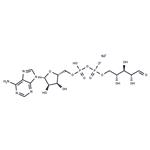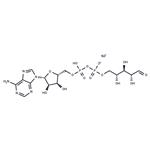in vitro
In mouse embryonic fibroblasts (MEFs), H2O2 treatment demonstrates that the activation of poly(ADP-ribose) (PAR) polymerase-1 (PARP-1) produced Adenosine 5′-diphosphoribose (ADP ribose), which is an activating signal for TRPM2 channels, thereby promoting Ca2+ elevation through extracellular Ca2+ influx and (or) lysosomal Ca2+ release. This process eventually activates early or late autophagy in response to different degrees of oxidative stress.
TRPM2 channels are activated by binding Adenosine 5′-diphosphoribose (ADP ribose) to the intracellular NUDT9-homology (NUDT9-H) domain unique to TRPM2 and located at its C terminus. In addition to ADPR, intracellular Ca2+ is an essential coactivator: TRPM2 channels open only in the combined presence of both ligands.



